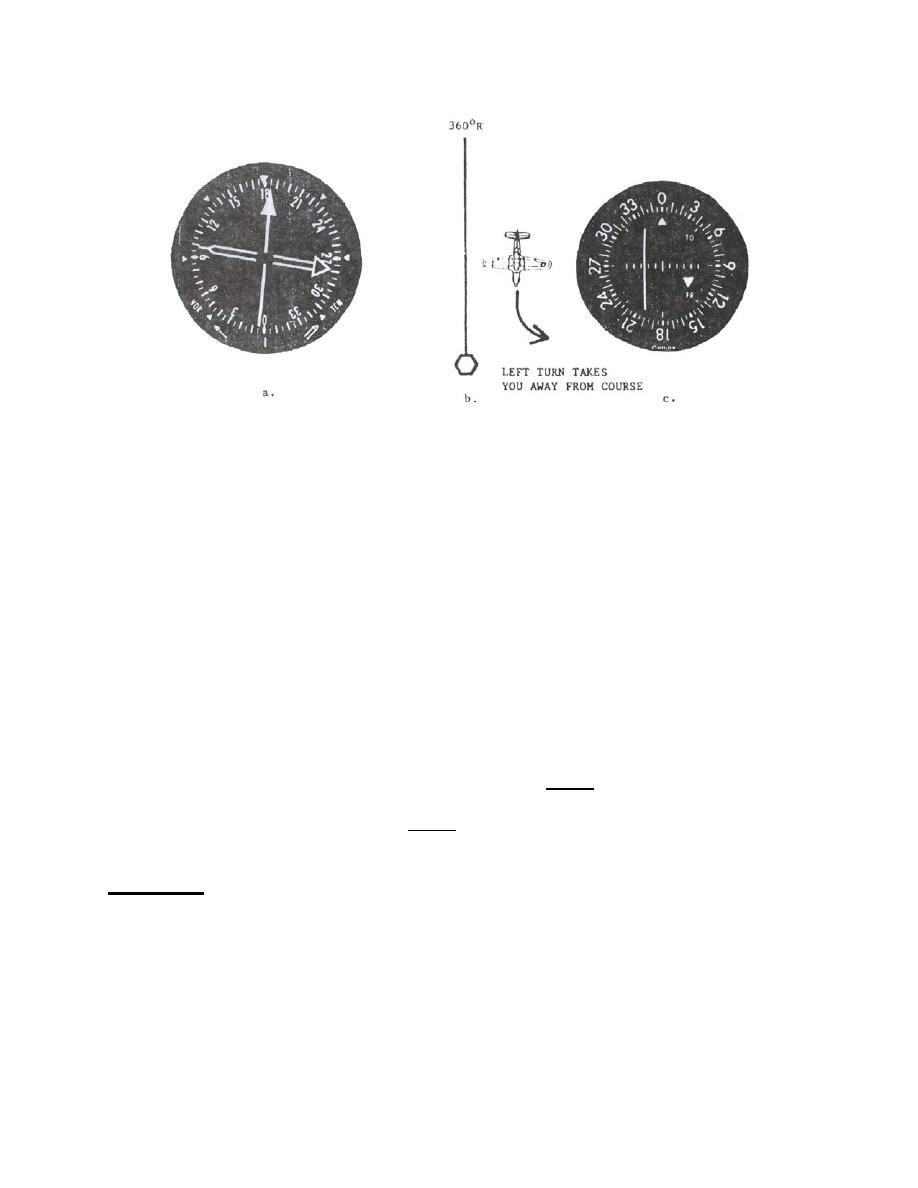 |
|||
|
|
|||
|
|
|||
| ||||||||||
|
|  INSTRUMENT NAVIGATION
Figure 45
In Figure 45c the CDI is displaced to the left of center. This would suggest a left turn to
return to the desired course. However, examination of Figures 45a and 45b indicates a right turn
is necessary.
We can see that we appear to be getting conflicting information. The RMI shows a right turn
necessary to return to course - the CDI indicates a left turn.
This is a condition of the IND-350 known as "reverse sensing". Reverse sensing will occur
any time you twist a course with the OBS which lies in the lower half of the RMI, the case
illustrated in Figure 45. In some cases, this may be done deliberately with the intention of
immediately turning to a heading on which the IND-350 will provide proper sensing. In most
cases, however, reverse sensing will be the result of setting an improper course (probably 180
degrees off) with the OBS, which is the case in Figure 45.
To avoid reverse sensing make it a habit to orient yourself on the RMI and use the IND-350
in its proper secondary role. Make sure you have the proper course selected with the OBS,
remembering that if you track inbound to a station the course will be the reciprocal of the radial.
If you always remember to set the proper course with the OBS, the vertical bar (CDI) will always
tell you the direction to turn to return to course (i.e. if the bar is displayed to the left, turn left!)
SUMMARY
We have discussed the methods and procedures for determining courses, corrections to
courses and radials, and for maintaining these courses. We have also discussed drift, crab angle
and wind computations in relation to course control. Radial tracking is not limited to airways
navigation. All Standard Instrument Departures (SIDS) and instrument approaches involve some
form of radial tracking. You will find airways navigation will provide good practice and
discipline for these critical areas of flight.
3-34 RADIAL TRACKING AND COURSE CONTROL
|
|
Privacy Statement - Press Release - Copyright Information. - Contact Us |